In general, many houseplants can survive in water, especially aroids and vining plants. Succulents can generally be started in water, but to grow them in water full time can be tricky.
The most successfully water-grown plans will be ones that are naturally adapted to living in streams or creek sides, or other plants that are from wet and humid environments.
In this guide we’re going to cover 10 different types of indoor plants that can grow in water and give you some care tips to help you keep them successfully!
Indoor Plants That Grow in Water
Here are 10 of our favorite houseplants that you can grow directly in water:
1. Pothos
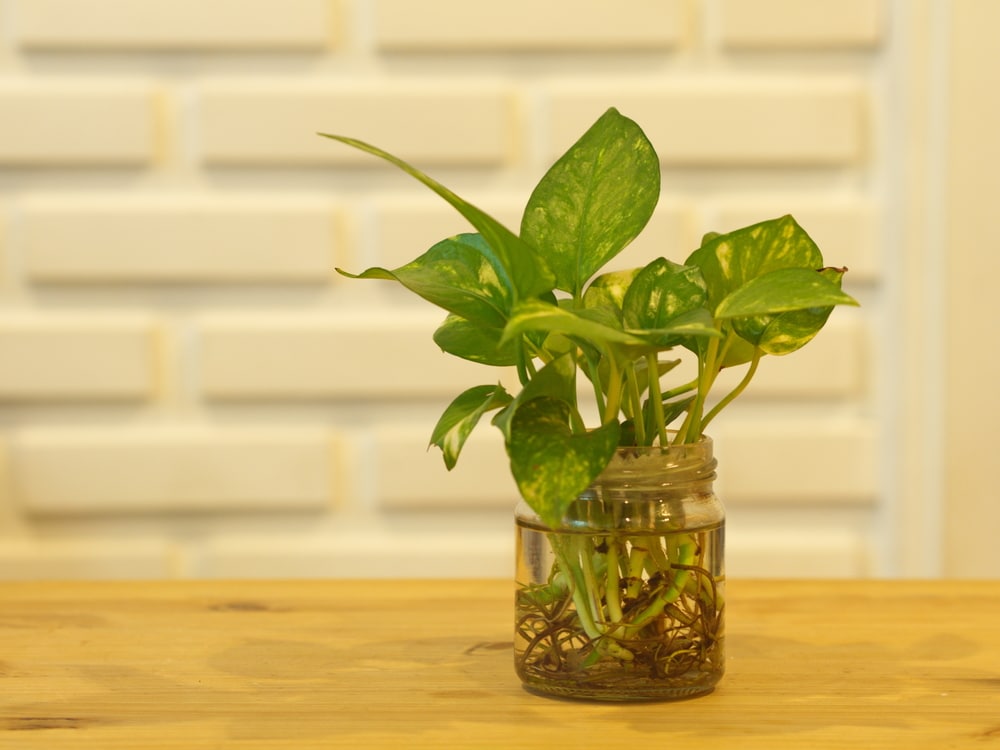
Of course, pothos had to be the first choice. There are so many different varieties of pothos you could fill a room with just pothos trimmings in water. Pothos are easy to care for and need minimal light and attention. Pothos plants are so hardy and well-adapted to growing in water that people use water to propagate trimmings all the time. Another use of pothos in water is within the aquarium hobby: people often times will use trailing pothos from their aquarium as nutrient export to make it a more natural environment with less filtration and water changes needed. If you have never grown plants in water before, pothos is a great first choice.
2. Heart-leaf Philodendron
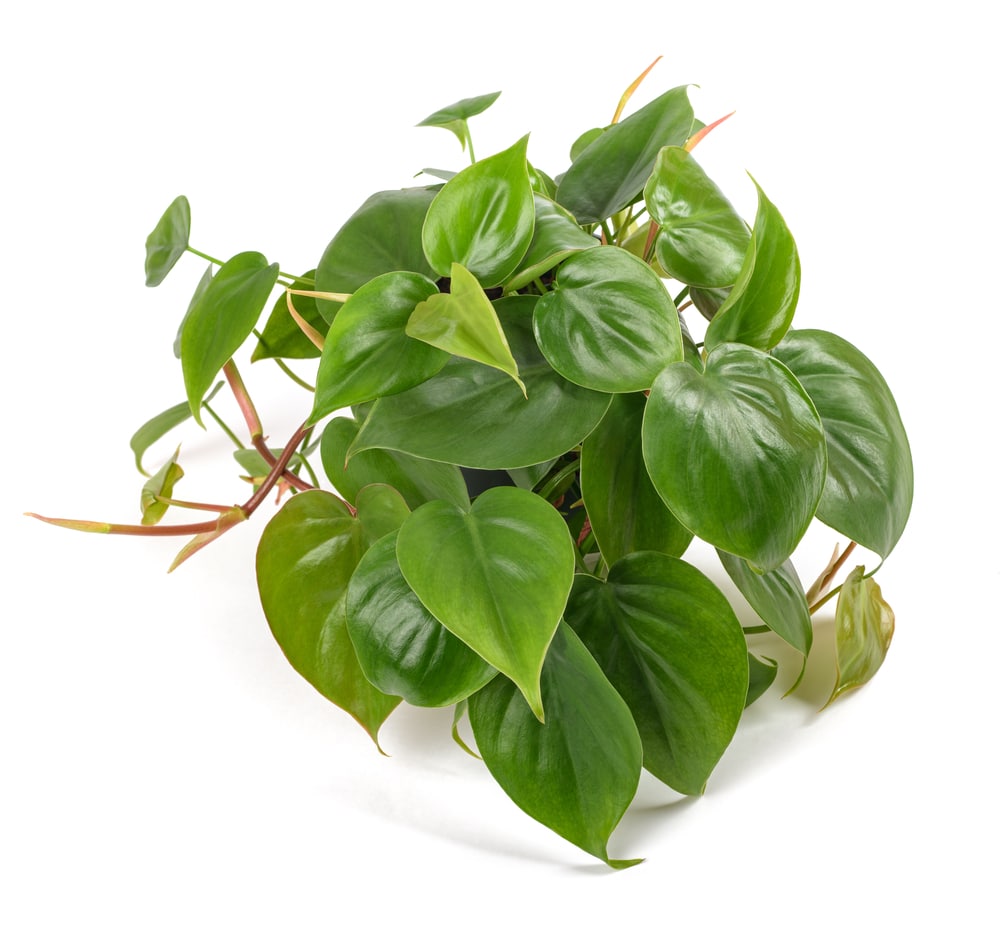
Another popular choice, the heart-leaf philodendron aka Philodendron hederaceum is a lovely plant with green heart-shaped leaves. This plant is so awesome, it has actually won the Royal Horticultural Society’s Award of Garden Merit! This awesome plant will grow and vine very similarly to pothos, with about the same care requirements. If you’re looking for an interesting leaf shape, this is the one for you.
3. Basil
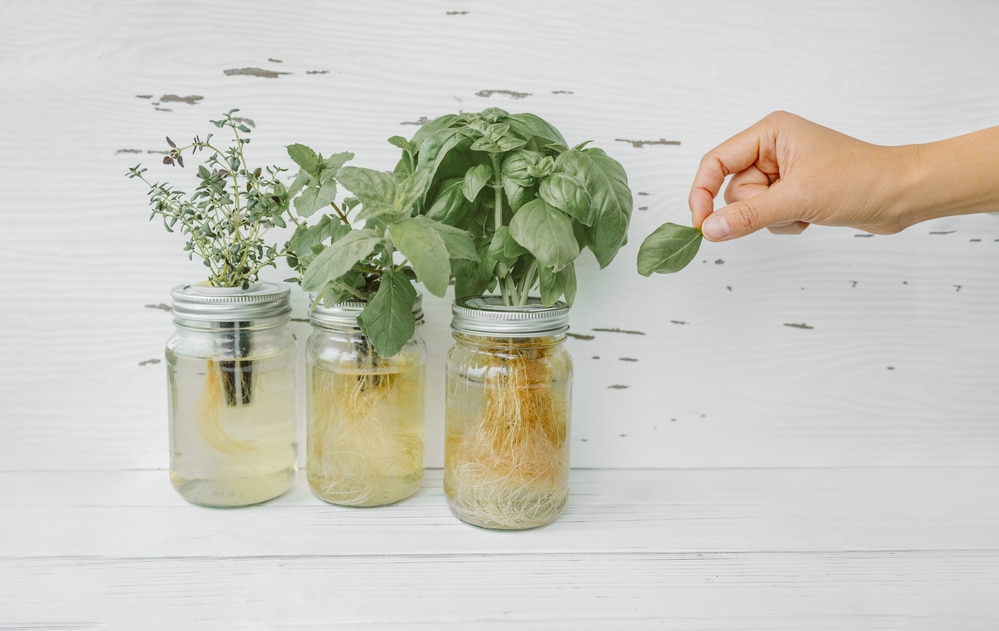
Yes, you read that right: basil. Basil is a very easy-to-grow herb and is so easy it can even be grown in water! If you want to grow your own pizza topping then you need to make sure you have high levels of indoor light and you fertilize often. Basil is a lovely choice to grow in water and you can often get stems from the grocery store to use. To grow basil in water, simply place a stem in the water making sure the leaves don’t touch the water. Then, you just wait until roots begin to grow and boom! You have a basil plant. This is an ideal way to grow basil or home cook, or even just save it for a few weeks if you have more than you know what to do with.
4. Chinese Evergreen
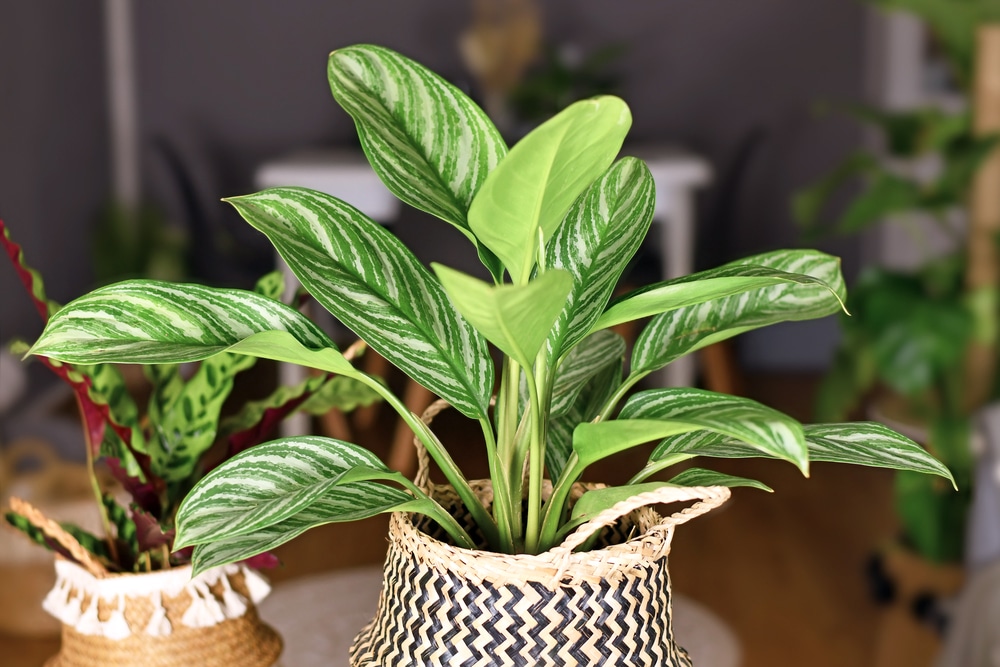
Chinese evergreens are just as easy in soil as they are out of it! All you need is a cutting and a water-holding container, and you are bound for success. These iconic plants will grow large masses of roots in the container that can be especially striking to see in a clear glass container.
5. Lucky Bamboo
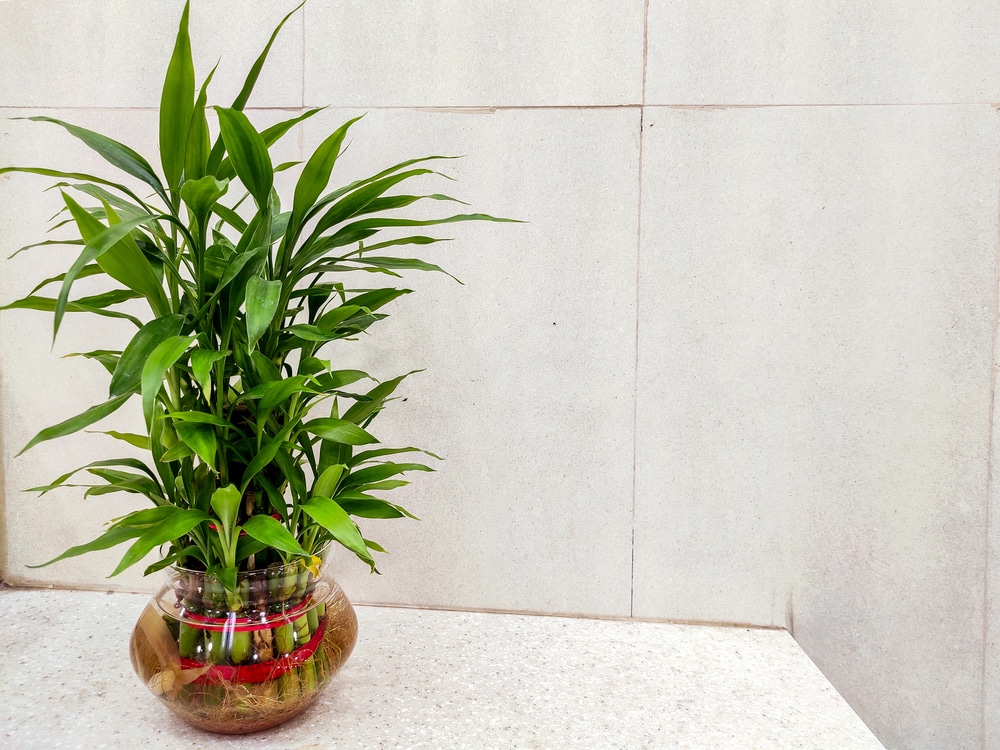
Another favorite of aquarists, lucky bamboo is actually not a species of true bamboo, rather it is a member of the Dracaena genus, and is specifically Dracaena sanderian. This plant is as easy as 1-2-3.
- Buy the plant (or get a cutting from a friend!)
- Put the plant in water
- Enjoy your lucky bamboo
It really is that easy! Dracaena sanderian is a popular choice for growing in water because of its adaptability and ability to withstand less than perfect conditions. After all, there’s a reason it is often given away to college students.
6. Baby Tears
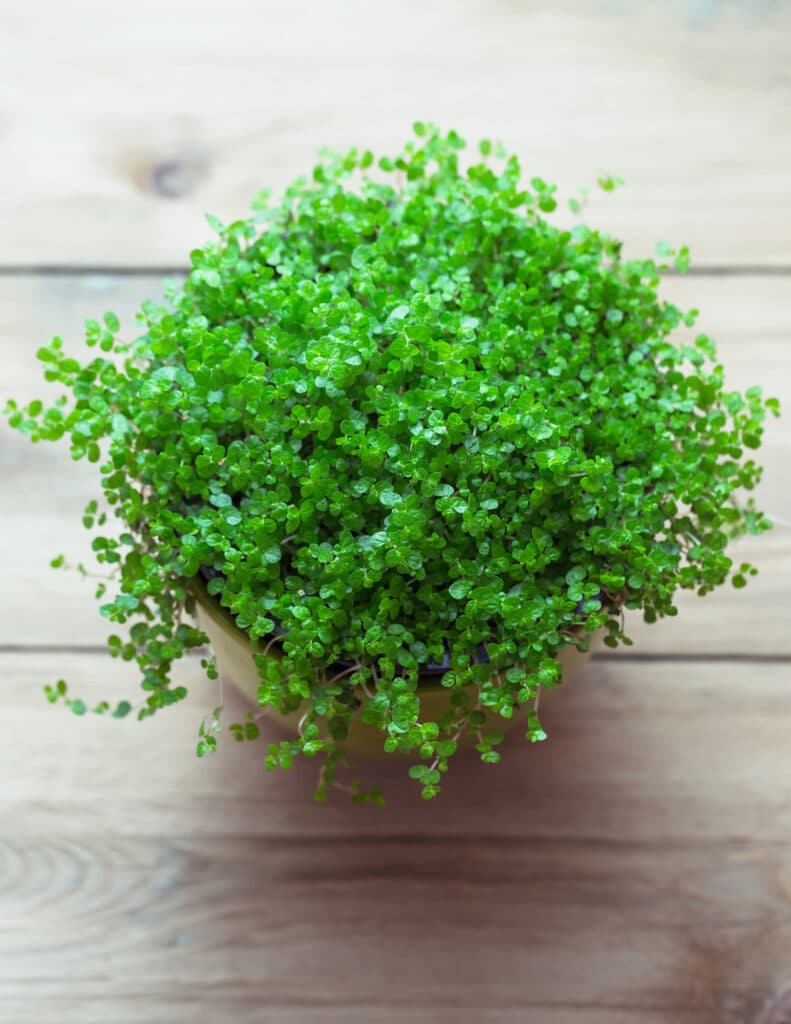
Although the name of this plant is sad, it will do nothing but bring you joy! Baby tears is a small-leaved plant that has actually even been found growing submerged below the water line and is often used in home aquariums in a variety of ways. If you want to grow baby tears for yourself, you just simply need a few stems and you’re off to plant growing success. One aspect to consider when growing baby tears is that with so many leaves comes lots of dropped leaves. It is extra important to change the water that baby tears grows in at least weekly in order to prevent them from rotting and hurting your mother plant.
7. Spider Plant
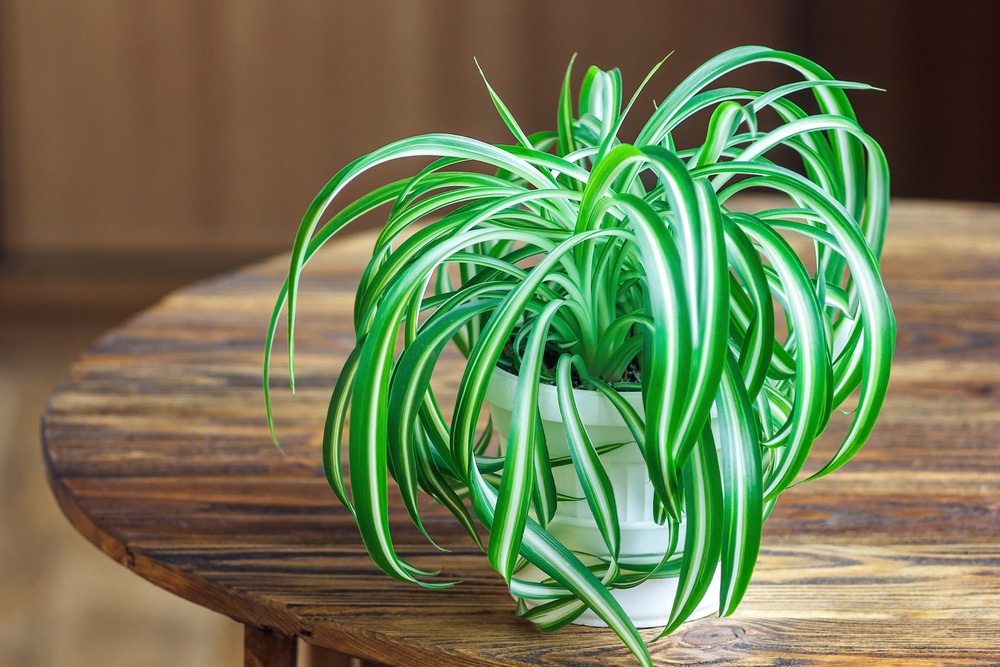
Spider plants are possibly one of the most common plants, and for good reason! These beautiful plants can thrive anywhere and are very easy to care for. Spider plants are so easy to careful they can even be grown in water with minimal preparation or care!
8. Begonia rex
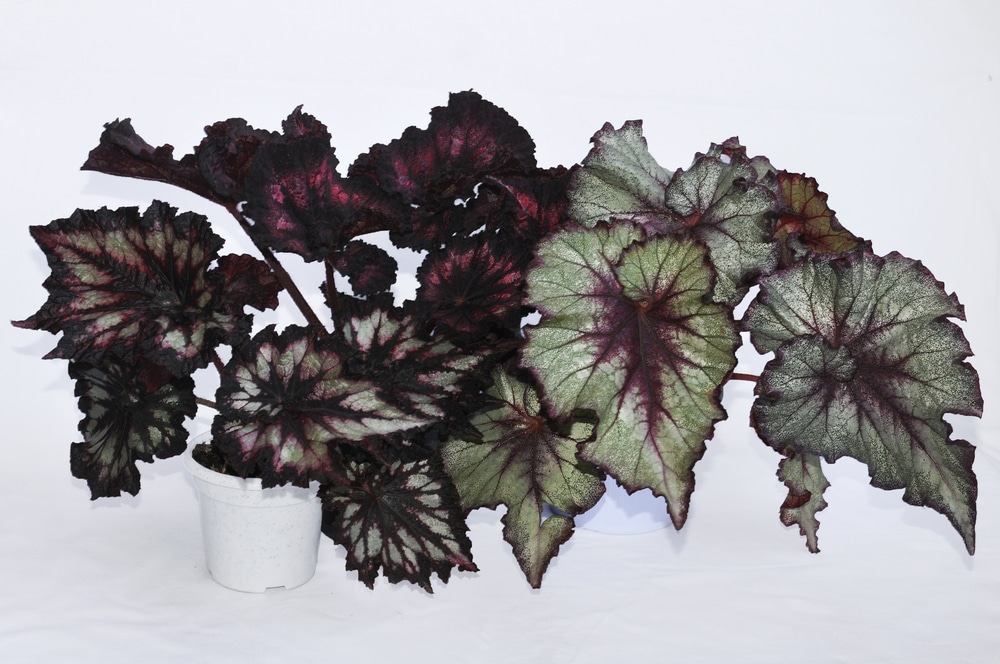
The rex begonias have some of the most stunning foliage in the houseplant world, and you can bring that jaw-dropping foliage into your home with nothing more than just a glass of water. To grow your rex begonia in water you simply need a stem cutting and to place it in water. With begonias, roots take a long time to form. It could be a few weeks or a month before you start seeing roots, but don’t fret! As long as your leaves and stem look healthy then you are a-okay.
9. Inchplant
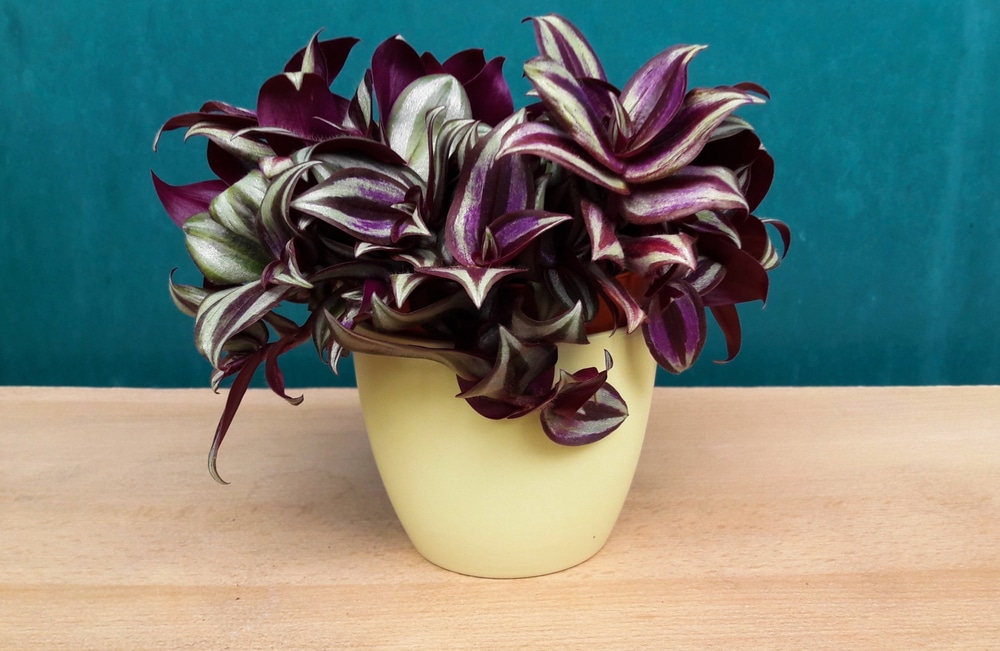
Also called wandering dude, by the or the scientific name of Tradescantia zebrina, the inch plant is another fun trailing pant that has very striking leaf colors and a lovely trailing nature. The more sun you give these plants the more the purple and silver sheens of their leaves will shine. As with the rest of the vining plants, to grow them in water just make sure you submerge the stem and leave the leaves out of the water.
10. Philodendron micans
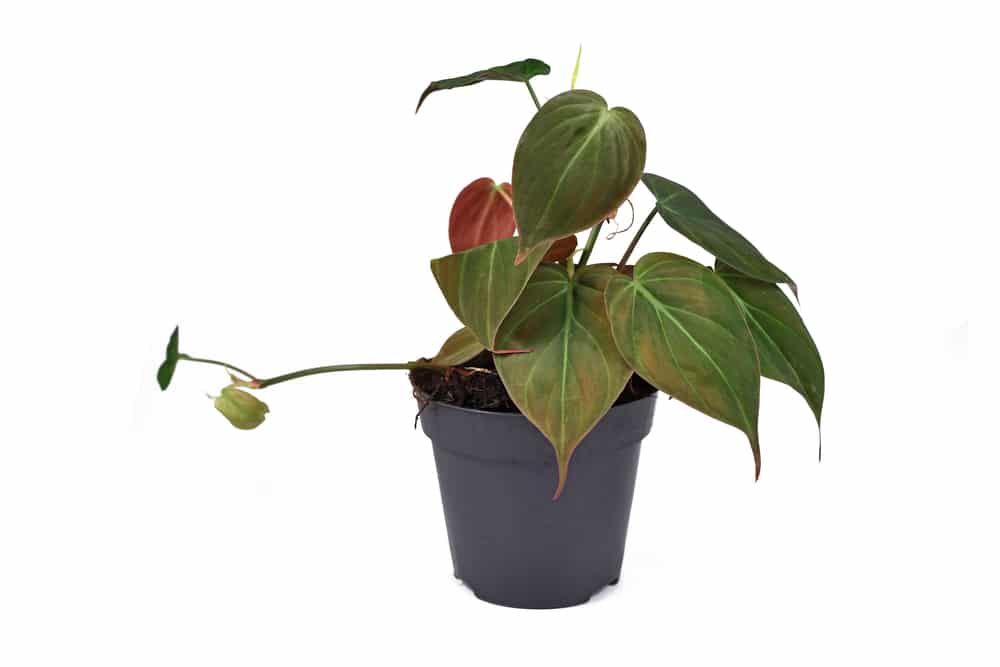
This may be the toughest plant to grow in water on this list, but if you can manage to do it then it is well worth it! The Philodendron micans has velvety leaves with a red undertone that are sure to be a stunner if you are able to keep them going. Starting propagates for these plats is often done in water, and you can grow them in it full time as well. Extra care needs to be given to these plants to make sure the water stays clean and is not polluted with rotting leaves or roots, but the care is well worth it.
Important Considerations When Keeping Plants in Water
Here are a few important considerations that you should keep in mind if you decide to keep your plants directly in water instead of soil:
Fertilization
The first aspect to consider when you want to grow plants in water is fertilization. Normal tap water tends to have low amounts of nutrients such as potassium, nitrate, and phosphorous. Although this is great for your health, it’s not great for your plant’s health. Many plants, such as pothos, can survive in low nutrient water conditions but their growth rate might not be what you were hoping for. One way to combat this is through fertilization. If you decide to use fertilizer in your water-growing plants its important to use very dilute fertilizer. If the fertilizer is too concentrated then you may risk burning your plants.
One simple way of fertilizing your water grown plants is to use left-over aquarium water after your do a water change on it (that is, if you have an aquarium). The nutrients in the water are dilute and ideal to use for water-grown house plants or even to water your soil-grown plants.
Light
Obviously, the amount of light you give your plants depends on the specific plant, but when growing primarily in water, plants may suffer more than usual from too little light. If a plant has too little light, they may not be able to utilize the water that surrounds their roots as efficiently. For this reason, it is important to give your plant more than adequate light levels.
Water Changes
Even though you don’t need to think about watering your water-grown plants in the typical sense, it is still important to replace the water at regular intervals. The exact amount of time in-between changing water may vary from person to person and plant to plant, so it is best to experiment for yourself.
Why is changing water so important you may ask? Well, that’s a great question! The water that your plants are growing in, much like soil, has a limited amount of nutrients. However, unlike soil, water has much lower concentrations of nutrients than soil does. So, even though a plant might be able to survive in nutrient-poor water, doesn’t mean it will thrive. With too little nutrition, your plant may stagnate in growth and become more of a decoration and less of a living thing. If this if your goal, then great! If not, it’s best to fertilize and change your water
Another reason it is important to change your water, and not imply refill it is that over time excess minerals or decay products may build up. This could be sodium or other micronutrients not used as much by plants as NPK, or it could be organic decay products from your roots or stems rotting. These can all harm your plant more than expected and so it is important to give your plants fresh clean water.
Growing Container
When thinking about what you want to grow your plants in, it is important to think about the actual container your plants will be growing in. Specifically, it is important to think about the surface area of the water in your container. Very low surface areas may cause there to be a lack of oxygen exchange within the water, which could lead to anoxic conditions. It is important to avoid anoxic conditions because it will lead to similar symptoms as saturated soil in a typical pot. This lack of oxygen negatively affects the plants and can-do long-term damage or even kill them from decay and root rot. It’s important to make sure your plants get enough oxygen.
Another aspect to think about in your growing container is if you will add anything to it other than water. Many people add colorful gravel, pebbles, foam, or glass beads to their water containers. This can add an extra fun splash of color when looking at your plant, especially if your growing container is clear.

